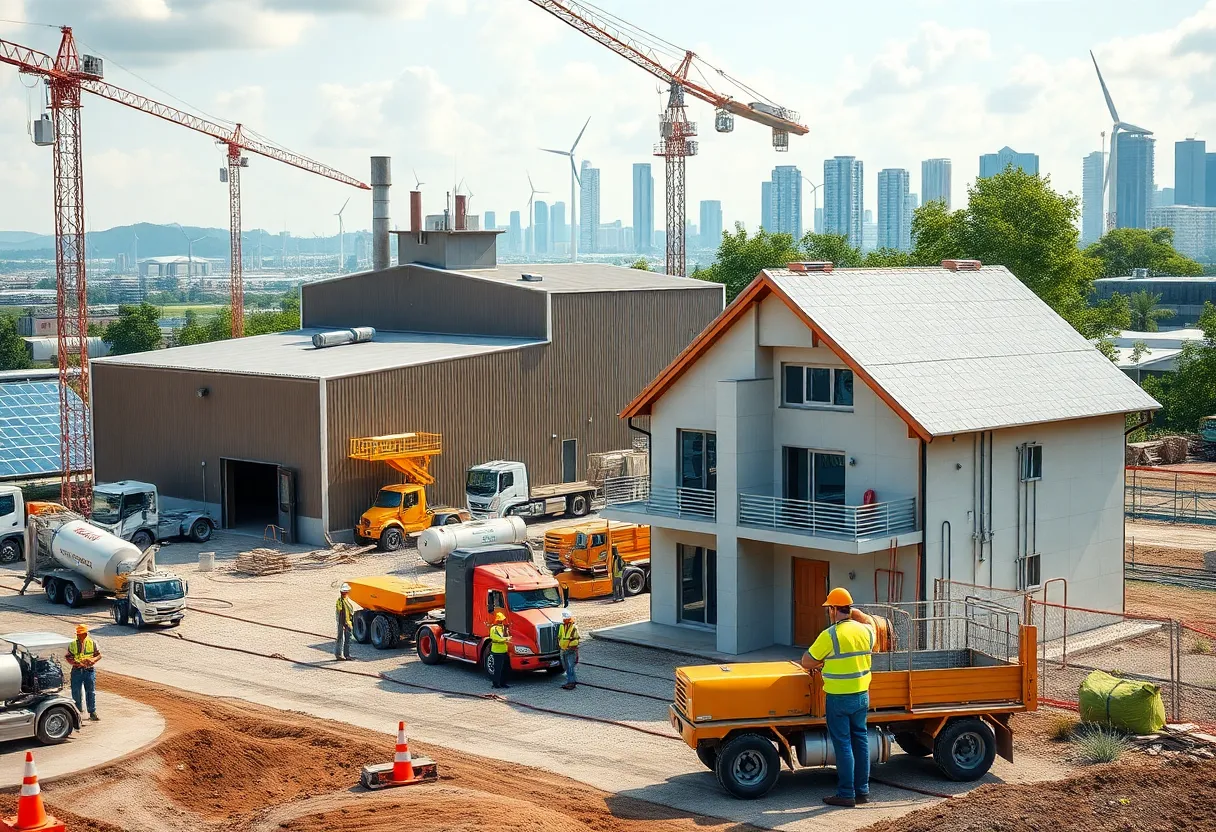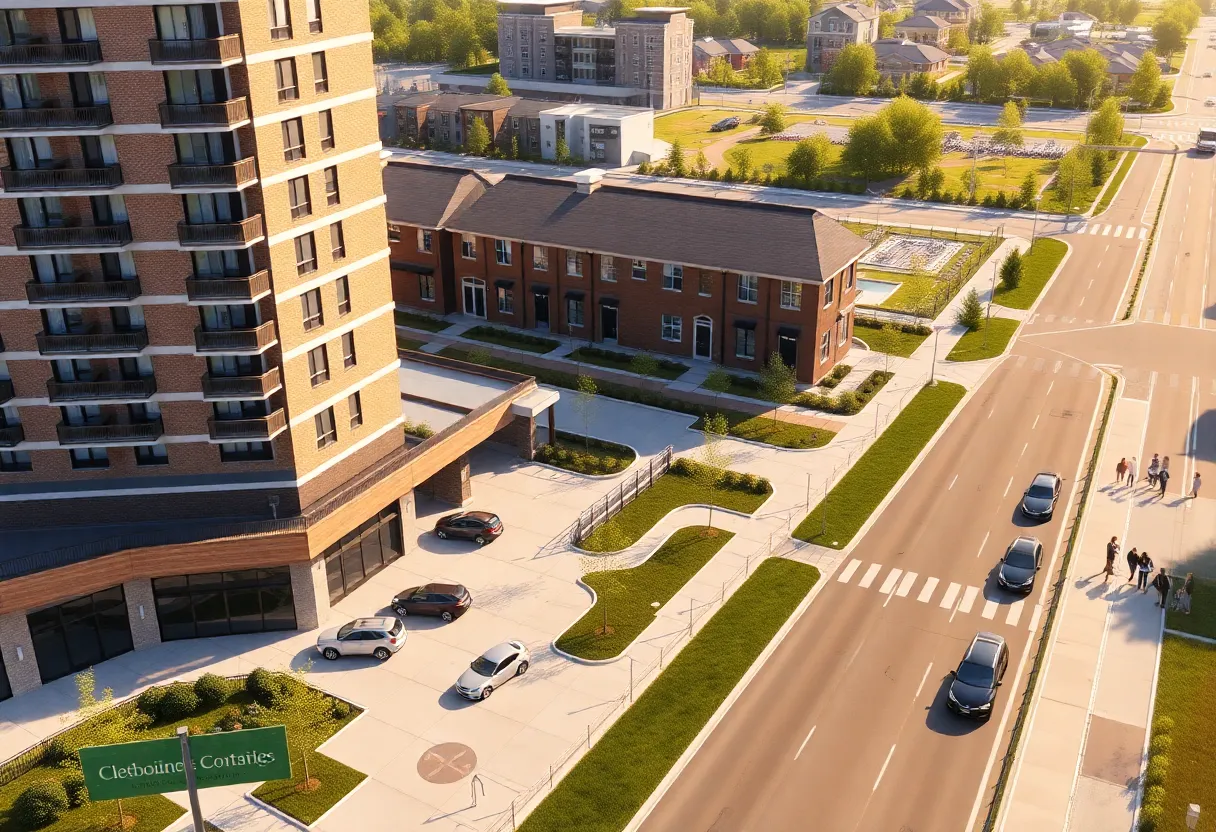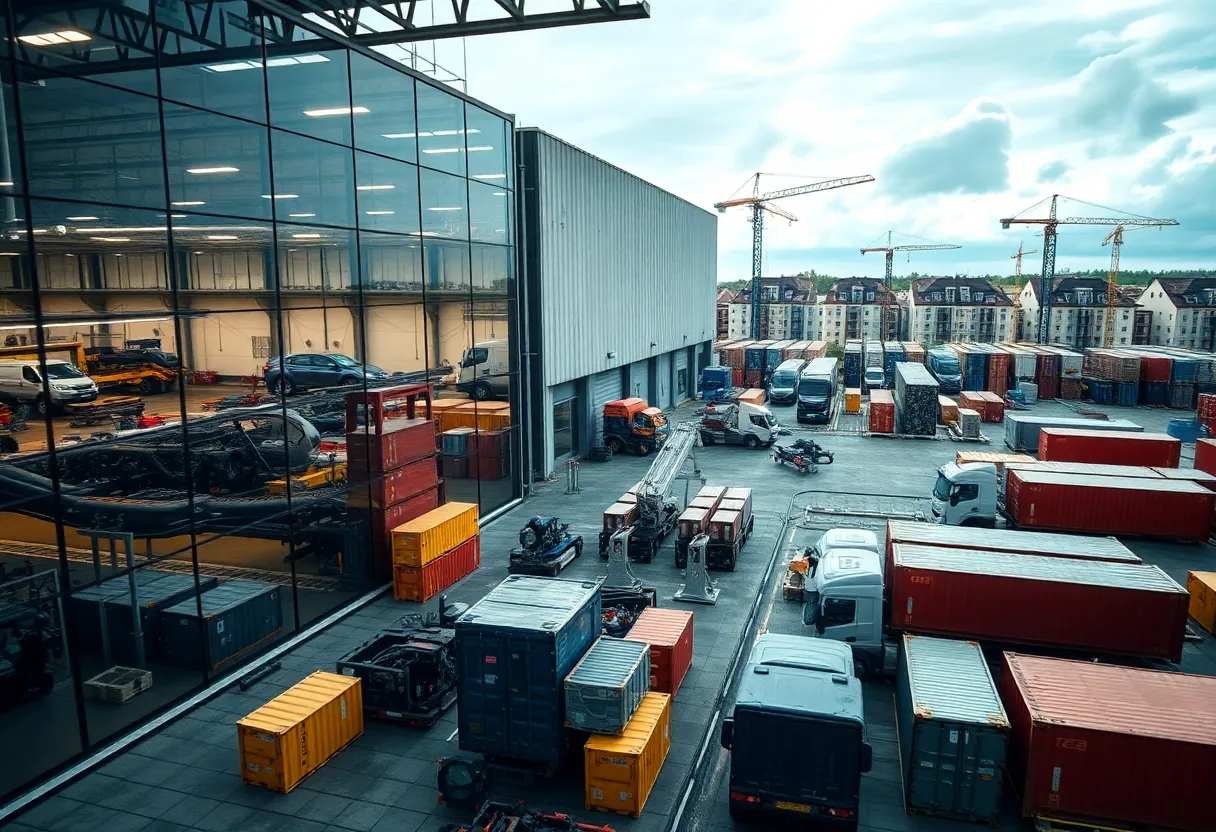Yaroslavl, Russia, September 8, 2025
News Summary
Three sector developments signal near-term shifts in construction and building materials. A climate-tech cement developer secured venture debt to scale an alkali-fusion, AI-driven ultra-low carbon cement that claims up to 85% CO2 reduction versus traditional Portland cement. In Yaroslavl a multi-company team completed Europe/CIS’s first residential 3D-printed house, printed in parts and assembled on site, now connected to utilities and habitable. Separately, an investor programme published its Top 50 Contech startups and a market report showing strong deal activity and investor focus on productivity and green construction, informing priorities for contractors and funders.
Material Evolution secures venture debt to scale ultra-low carbon cement technology
Material Evolution has secured a venture debt facility from HSBC Innovation Banking UK to accelerate the development and scale of its ultra-low carbon cement technology, MevoCem. The technology combines alkali fusion and AI-powered design to offer cement alternatives with the potential to reduce CO2 emissions by up to 85% compared with traditional Portland cement.
The company was founded to decarbonise the cement industry, aiming to replace conventional cement with lower-emission solutions. MevoCem represents the first product from this approach, leveraging chemical processing together with data-driven design to target carbon reductions across the cement value chain.
The venture debt facility is expected to support continued development, commercial traction, and the expansion of the company’s capital stack beyond non-debt sources. By enabling faster growth and broader outreach, the financing aligns with plans to mature the technology for global markets.
HSBC Innovation Banking UK is described as a leading financial partner for high-growth, innovation-led businesses, and the bank’s involvement is presented as part of a broader commitment to climate tech innovators seeking to build a more sustainable construction sector. The agreement is framed as a milestone in Material Evolution’s journey toward scaling its technology and impact.
The announcement highlighting the debt facility noted the intent to use the funds to strengthen commercial traction and widen deployment of MevoCem technology in future projects. The coverage also pointed to the broader industry context, where digital and sustainable solutions are increasingly shaping investment decisions in construction.
Publication date: 20 June 2025
AMT-SPECAVIA’s Yaroslavl project: a large-scale 3D-printed residential building
A project in Yaroslavl, Russia, built with AMT-SPECAVIA’s 3D construction printing technology is described as the first residential building in Europe and the CIS completed for real end-use. The construction process involves creating a 3D model, dividing it into layers, and extruding a cement-based mixture layer by layer until the structure is complete. The building frame was printed in parts and assembled on a base, enabling full assembly within a month of starting the on-site work, with roof completion and interior finishing following in 2017.
The project encompasses a total area of 298.5 square metres and is connected to utilities, ready for occupancy, and claimed to be the largest building in the region produced with additive technology. Compliance steps included project design, building permit issuance, technical passport issuance, and cadastral registration, with registration targeted by late 2017 in the report. The printed components were produced using a portal-type printer with a 3.5 x 3.6 x 1 metre working field and printed in 10 mm layers with widths of 30–50 mm, achieving printing rates of up to 15 square metres per hour. The method involves printing walls, decorative elements, and towers in parts, then transporting them to the site for assembly, akin to a Lego-style process.
The equipment lineage includes the S‑6044 construction printer, a portal‑type model used to print elements with standard M‑300 sandcrete. Since the initial model, printing speed and quality have improved, while reliability remained a core advantage. AMT, SPECAVIA, and their affiliates describe themselves as leading developers and manufacturers of professional 3D printing equipment for construction, with AMT printers operating across multiple countries and a history dating back to 2009. The group emphasizes a progression toward faster, more capable printers and expanded industrial applications.
Cemex Ventures Top 50 Contech Startups 2025: market activity and trends
A separate update covers the unveiling of the Top 50 Contech Startups for 2025, released in late January 2025. The compilation identifies startups aligned with four strategic focus areas: Green Construction (sustainability), Enhanced Productivity (efficiency), Construction Supply Chain (agility), and Future of Construction (disruption). The period since 2021 has seen a shift toward a more selective funding approach, with a focus on solutions addressing the industry’s main challenges.
The accompanying report provides analysis of 2024 industry insights and a forecast for 2025 innovation and investment. In 2024, the sector collectively saw about US$3.1 billion invested across 325 deals, reflecting roughly a 38% increase in deal count and about a 2.3% rise in total invested compared with 2023. The growth occurred despite uncertain macroeconomic conditions, underscoring investor confidence in the construction tech potential.
Within the 2024 deals, Enhanced Productivity accounted for about 47% of the deals, and Green Construction accounted for around 24%, illustrating a clear tilt toward digitalization and sustainability. The report frames these patterns as indicators of the sector’s ongoing digital transformation and its push toward carbon neutrality by 2050. The analysis emphasizes continued global collaboration with startups to identify disruptive technologies and scale their adoption.
The collection of insights and the Top 50 list are positioned as a strategic view of the sector’s progress, highlighting how new technologies are enabling faster, more sustainable construction practices. The update is associated with a forward-looking view on how investment in contech may evolve in 2025, with attention to the integration of digital tools and sustainable processes into mainstream construction workflows.
The release date for the 2025 Top 50 list is 30 January 2025, and the coverage notes the ongoing emphasis on climate-friendly and efficiency-oriented solutions within the industry.
Frequently Asked Questions
Q: What is MevoCem and how does it reduce emissions?
A: MevoCem is Material Evolution’s cement technology designed to lower carbon emissions by significantly reducing the cement’s life-cycle emissions compared with traditional cement, using alkali fusion and AI-driven design to optimize performance and emissions outcomes.
Q: What is venture debt and why is it used in industry-scale projects?
A: Venture debt is a loan instrument aimed at high-growth technology companies to support scaling and commercial traction, complementing grants and equity funding as part of a diversified financing strategy.
Q: What is AMT-SPECAVIA’s Yaroslavl project?
A: The Yaroslavl project is a 3D-printed residential building reported as the first such end-use structure in Europe and the CIS, produced with additive construction printers and assembled on site for occupation readiness.
Q: What trends did the 2025 Top 50 Contech Startups highlight?
A: The trends point to sustained demand for digital and sustainable construction solutions, with investments distributed across Green Construction, Enhanced Productivity, Construction Supply Chain, and Future of Construction, and a continued rise in activity despite macroeconomic headwinds.
| Feature | Description |
|---|---|
| Technology | Alkali fusion and AI-powered design enabling ultra-low carbon cement (MevoCem) |
| Emissions reduction | Potential up to 85% reduction in CO2 vs conventional cement |
| Funding | Venture debt facility to support growth and diversify financing |
| 3D printing milestone | Yaroslavl project: 298.5 sq m residential building, first end-use 3D-printed home in Europe/CIS |
| Printing tech | Portal printer S-6044, 3.5 x 3.6 x 1 m field, 10 mm layers, 15 sq m/h |
| Market context | Contech sector trends show focus areas: Green Construction, Enhanced Productivity, Construction Supply Chain, Future of Construction |
Deeper Dive: News & Info About This Topic
Additional Resources
- WorldCement: Material Evolution secures venture debt from HSBC
- Wikipedia: Cement — Environmental impact
- VoxelMatters: First 3D‑printed live building in Europe unveiled (Yaroslavl)
- Wikipedia: 3D printing — Construction
- WorldCement: CEMEX Ventures unveils the Top 50 Contech startups of 2025
- Google Search: Contech startups 2025 Top 50
- WorldCement: Holcim UK launches construction industry roadmap
- Encyclopedia Britannica: Holcim (search)
- OpenPR: CIS Construction Chemicals in Europe market booms 2025
- Google News: CIS construction chemicals market 2025





